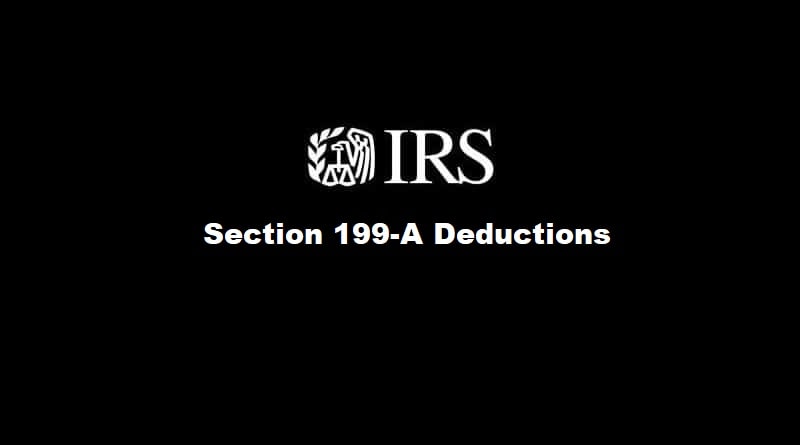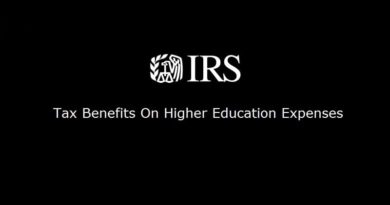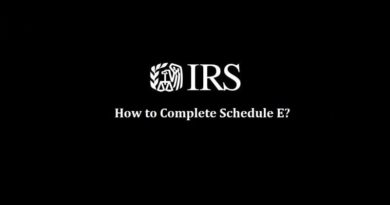Complete Guide of Section 199A Qualified Business Income Deduction
2018 taxes are going to be due just after 4 months and you need to start preparing for it right from this moment. So, whether you are in need of lease accounting professionals, or services that can help with your management accounting, you’ll need to set the wheels in motion. Insights about what deduction you can claim can prove to be quite valuable and can save you tons of money. For e.g., let’s talk about the 20% Qualified Business Income Deduction (a.k.a the section 199a deduction).
A provision which came into existence after the enactment of the Tax Cuts and Jobs Act (TCJA) aims to provide relief to the self-employed and the pass-through entities to apply a 20% deduction to their qualified business income.
In this article, we will see if you even qualify for this deduction. If yes, then how you can take advantage of the section 199A qualified business income deduction to save the maximum of your hard earned money.
What is the 20% Qualified Business Income Deduction (Sec. 199a Deduction)?
While the “Donald Trump Vitriol” has become more or less a global pop culture but we’ve got to hand it out to him. Not everything is going South in his “Kingship”.
With the introduction of the Tax Cuts & Jobs Act, a common US citizen is now expected to take back home relatively more money at the end of the day.
So what’s this 20% qualified business income deduction?
Well, now, the pass-through businesses (or self-employed taxpayer) can deduct 20% of their qualified business income (QBI), earned from a qualified trade (see below) before calculating their taxes.
Simply put, say you have USD 100 as a QBI on which you had to pay your taxes previously. Now, you can deduct 20% from this QBI and pay your taxes on the remaining USD 80.
That’s some serious cut in taxes. Isn’t it.
Of course, the new section isn’t that simple it sounds as the new tax law is a bit more nuanced than what I may have made it sound like. However, I will make sure to do my best in guiding you how you can save your hard-earned money by applying this deduction.
So keep reading.
Also Read: How to claim tax benefits for higher education expenses?
Who can claim the Section 199A Deduction?
Every taxpayer who is not a corporation can claim this 20% deduction. So basically, the pass-through businesses like sole proprietorships, S-corporations or partnerships who indulge in a qualified trade can take advantage of this deduction.
These entities also involve certain rental real estate investment income, publicly traded partnerships, real estate investment trusts (REITs), and qualified cooperatives. Take a look at this article on the best reits uk to invest in if you want to be able to claim this deduction.
Real estate can be seen as a very lucrative investment opportunity that investors may not know much about but want to put their hand in to see if it is worth their adding to their financial portfolio. Checking out websites like https://www.moneyunder30.com/roofstock-review as well as other investment sites, can show what the pros and cons are of real estate investing and if it a positive avenue to down. You may also want to liaise with someone who knows their way around real estate opportunities like Lincoln Frost, and others similar to him, so you can get an all-around look at the best way to invest your money.
Why has the section 199A Deduction Enacted?
This seems to be a slightly long topic and I’m afraid, would drift the whole purpose of the article which is to let you guys know how to take advantage of it.
However, if you’re interested to know the “politics” behind this tax-cut then I’d suggest you go ahead and read this article.
What are the Pass-Through Entities?
Simply speaking, Pass-Through entities do not pay corporation tax. Instead, they pass on their incomes to the owners who instead pay income tax on them.
What is a Qualified Trade or Business?
In terms of the Sec. 199A, a qualified trade is every form of trade or business except:
-
- The trade or business of performing services as an employee and
- Services performed in the fields of law, accounting, financial services, performing arts, sports etc. or where the business’s principal asset is the reputation or skill of one or more owners or employees.
In other words, any business that does not qualify for the 20% business income deduction may also be called a “specified trade or business” or SSTB.
So to make it simple, a qualified trade or business can claim the 20% deduction but a specified trade or business cannot.
…However, there is an exception to the rule.
The exception to the Qualified Trade or Business
Though the specified trade or business generally cannot claim 20% business income deduction but there’s an exception and a taxpayer can take advantage of the deduction if:
- Filing as a single has a taxable income less than $157,500
- Married filing jointly, has a taxable income of less than $315,000
Is there any limit to the Qualified Income Deduction?
Yes, the deduction is limited to the greater of
- 50% of the W-2 wages with respect to the trade or business, or
- The sum of 25% of the W-2 wages, plus 2.5% of the unadjusted basis immediately after acquisition of all qualified property (generally, tangible property subject to depreciation under Sec. 167).
Additionally, the deduction should not exceed
- Taxable income for the year over
- Net capital gains plus aggregate qualified cooperative dividends.
All these details have already got your head spinning? Don’t worry, for I will mention a few examples below to wrap your head around it.
However, first, let’s see how you can calculate the section 199A deduction.
Also Read: How to save tax by claiming tax benefits on your job hunting expenses?
Section 199A Deduction Calculation
The total Section 199A deduction should be the lesser of:
- 20% of your combined qualified income from qualified trades and
- 20% of your personal taxable income (less net capital gains and cooperative dividends)
Example 1
Mr. Alex owns a mart where the total income he generates is 100,000 in 2018. After including the non-business allowable expenses, Alex’s total taxable income is $84,000. Mr. Alex files his annual tax return as a single taxpayer.
Mr. Alex’s total Section 199A deduction for 2018 will be $16,800.
Reason
As the 20% of the taxable income $16,800 ($84,000 x 20%) is less than the 20% of the QBI $20,000 ($100,000 x 20%) so the 199A deduction would be $16,800.
Example 2
This time, just add a capital gain of $5,000 in the above example.
This time, Mr. Alex’s Section 199A Deduction would be: $15,800 (($84,000-$5,000) x 20%)
Of course, the above two examples would never suffice to explain a tax law which is far more nuanced. Therefore, I have compiled a whole list of examples (or case studies) which will guide you better to figure out the Qualified Business Income. Just subscribe below to download the free case studies.
Where to Enter the Qualified Business Income on the Tax Return?
Since the Section 199A deduction pertains to the individual tax return, you can enter it in the form 1040.
When it comes to the exact line number, it’d be the line number 9, page 2 of your individual tax return, Form 1040.
Here’s the image:

Final Word
So that’s it. I hope this article will prove to be quite helpful in understanding the Section 199A Qualified Business Income Deduction. I’ve tried it to make it as simple as possible. However, to understand it even better, I’ve compiled a whole list of different scenarios and what QBI will amount to in each case.
If you want to receive a copy of these scenarios then follow this link.





Pingback: New Meals & Entertainment Deductions Under Tax Cuts and Jobs Act - The Usual Stuff
Pingback: My Homepage
Pingback: https://www.mycatsupplystation.com
Pingback: Zoey
Pingback: expense management